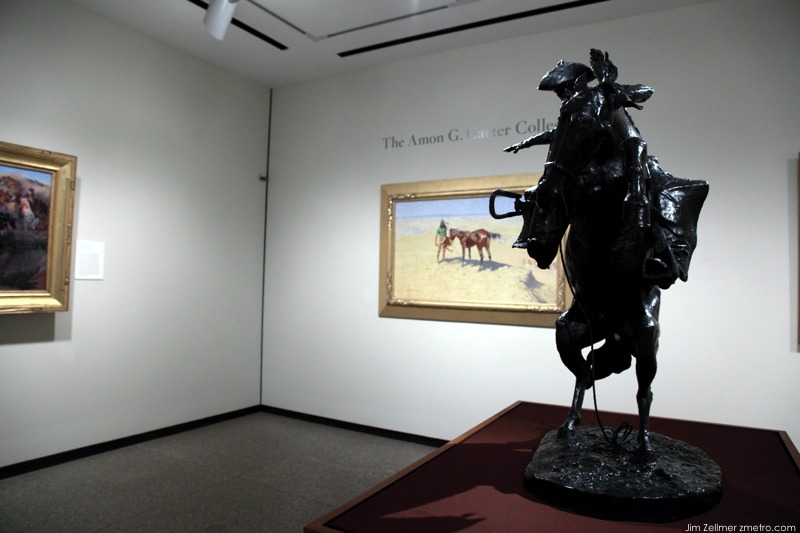My name is George C. Joseph. I am the sole owner of Sunshine Dodge-Isuzu, a family owned and operated business in Melbourne, Florida. My family bought and paid for this automobile franchise 35 years ago in 1974. I am the second generation to manage this business.
We currently employ 50+ people and before the economic slowdown we employed over 70 local people. We are active in the community and the local chamber of commerce. We deal with several dozen local vendors on a day to day basis and many more during a month. All depend on our business for part of their livelihood.
We are financially strong with great respect in the market place and community. We have strong local presence and stability. I work every day the store is open, nine to ten hours a day. I know most of our customers and all our employees. Sunshine Dodge is my life.
On Thursday, May 14, 2009 I was notified that my Dodge franchise, that we purchased, will be taken away from my family on June 9, 2009 without compensation and given to another dealer at no cost to them.
Southwest Airlines Enters Milwaukee
Good news for travellers and business:
Today, Southwest gave the residents of Wisconsin something to talk about around the bubbler.
We’re adding Milwaukee and General Mitchell International Airport to our network!!! Starting late this year, the home of the Cunninghams, the Fonz, Laverne and Shirley, the Bucks, the Brewers, and the Packers will become the 68th airport on the Southwest Airlines route map. (Yeah, I realize the Packers are technically based in Green Bay, but they’re the professional football team for the whole state of Wisconsin, so I’ll include them here!)
We know many of you in the Milwaukee area are already familiar with Southwest (low fares and GREAT Customer Service!)—but for our Customers that aren’t familiar with Milwaukee, you’ve got a treat in store for you. Besides having a vibrant business base, Milwaukee is just a lot of fun. Amazing food (please, PLEASE visit Mader’s for German food!), the arts (the Milwaukee Art Museum has masterpiece buildings designed by both Saarinen and Calatrava!), the home of Harley-Davidson (don’t miss their museum!), sausage, cheese, beer, sports, the lake….and of course, the people. Good people. Just don’t plan anything other than watching football on a Sunday afternoon when the Packers are playing. You could be very lonely…. *grin*
Milwaukee is going to be a GREAT addition to our network. Wisconsin’s legendary work ethic, which mirrors Southwest’s exceptionally productive Culture, is going to make us a great fit in the land of the Cheesehead.
Likely not so hot for Madison’s airport traffic….
U.S. Blues
The bear market in Treasuries will worsen, because of a glut of government bonds. Instead, consider high-yielding mortgage securities and certain munis. (Video)
We’re talking about U.S. Treasury securities, not housing. At the end of 2008, risk-averse investors poured into Treasuries, driving down yields to the lowest levels in decades. The 30-year Treasury bond fetched less than 3%, and short-term T-bills carried yields of zero.
Since then, the economy has shown signs of bottoming, the credit markets are functioning more normally, and the stock market has roared back from its March lows. Treasuries now are in a bear market, while bullish enthusiasm has taken hold in other parts of the credit market, including corporate bonds, municipals and mortgage securities, all of which had fallen from favor late last year. The 30-year Treasury, for instance, has risen to a yield of 4.10% from 2.82% at the end of 2008, cutting its price by 20%.
Barron’s called a top in Treasuries and a bottom in the rest of the bond market in an early 2009 cover story (“Get Out Now!” Jan. 5). We weren’t alone in recognizing some of the nutty year-end developments. Warren Buffett highlighted the sale in late 2008 by his Berkshire Hathaway of a Treasury bill for a negative yield. Buffett wrote in Berkshire’s annual letter in February that when “the financial history of this decade is written…the Treasury-bond bubble of late 2008” may rank up there with the housing bubble of the early to middle part of the decade. – How does the market look now? Treasuries still look unappealing for several reasons. Yields are very low by historical standards, the government is issuing huge amounts of debt to fund record budget deficits, and the massive federal stimulus program ultimately may lead to much higher inflation.
A Few Spring Garden Photos



Finance It Again Tim Geihtner
They say you don’t recognize history while you’re living through it, but it won’t be long before there’s no doubt about the historic character of what’s happening now. In the not too distant future, everyone will look back on this period and shake their heads, at both the disruption to our economy and many of our solutions to it. And when that day comes and today’s events can be seen with real clarity, we will all turn to each other and ask, “What were we thinking?”
Oh, well. There is at least one man today whose mind is already focused on where he will be standing many years from now. He has coolly witnessed the turmoil inflicted on our financial system and is dispassionately observing the panic that has overtaken us all in its wake. And, knowing that foolish decisions almost always follow emotional trauma, he alone is standing out front, gladly waiting to receive the fruits of the outrageous decisions we seem ready to make. He is Sergio Marchionne, the CEO of Fiat, and he is undoubtedly a genius without peer.
Encouraging Words
Consider if you will what is happening in the automobile industry today: A near catastrophic collapse in new car sales in most countries of the world. One might think that this signals consumers’ inability to purchase new cars, either for lack of a job or — as we have been told since last September — because they can’t get a loan for their transportation needs. But those issues are not really the problem. Many of the jobs lost were low paying jobs and therefore not new car buyers, for the rest, loans are readily available.
The Machinery Behind Health-Care ReformHow an Industry Lobby Scored a Swift, Unexpected Victory by Channeling Billions to Electronic Records
When President Obama won approval for his $787 billion stimulus package in February, large sections of the 407-page bill focused on a push for new technology that would not stimulate the economy for years.
The inclusion of as much as $36.5 billion in spending to create a nationwide network of electronic health records fulfilled one of Obama’s key campaign promises — to launch the reform of America’s costly health-care system.
But it was more than a political victory for the new administration. It also represented a triumph for an influential trade group whose members now stand to gain billions in taxpayer dollars.
A Washington Post review found that the trade group, the Healthcare Information and Management Systems Society, had worked closely with technology vendors, researchers and other allies in a sophisticated, decade-long campaign to shape public opinion and win over Washington’s political machinery.
Automation certainly makes sense, but we taxpayers should not be subsidizing it….
SOLAR TRANSIT OF ATLANTIS AND THE HUBBLE SPACE TELESCOPE
Only image ever taken of a transit of a space shuttle (Atlantis) and the Hubble Space Telescope (HST) in front of the Sun, during the last repair mission of Hubble, obtained from Florida at 100 km south of the Kennedy Space Center on May 13th 2009 12:17 local time, several minutes before grapple of Hubble by Atlantis.
America’s Triple A Credit Rating at Risk
Long before the current financial crisis, nearly two years ago, a little-noticed cloud darkened the horizon for the US government. It was ignored. But now that shadow, in the form of a warning from a top credit rating agency that the nation risked losing its triple A rating if it did not start putting its finances in order, is coming back to haunt us.
That warning from Moody’s focused on the exploding healthcare and Social Security costs that threaten to engulf the federal government in debt over coming decades. The facts show we’re in even worse shape now, and there are signs that confidence in America’s ability to control its finances is eroding.
Prices have risen on credit default insurance on US government bonds, meaning it costs investors more to protect their investment in Treasury bonds against default than before the crisis hit. It even, briefly, cost more to buy protection on US government debt than on debt issued by McDonald’s. Another warning sign has come from across the Pacific, where the Chinese premier and the head of the People’s Bank of China have expressed concern about America’s longer-term credit worthiness and the value of the dollar.
The US, despite the downturn, has the resources, expertise and resilience to restore its economy and meet its obligations. Moreover, many of the trillions of dollars recently funnelled into the financial system will hopefully rescue it and stimulate our economy.
How David Beats Goliath
When Vivek Ranadivé decided to coach his daughter Anjali’s basketball team, he settled on two principles. The first was that he would never raise his voice. This was National Junior Basketball—the Little League of basketball. The team was made up mostly of twelve-year-olds, and twelve-year-olds, he knew from experience, did not respond well to shouting. He would conduct business on the basketball court, he decided, the same way he conducted business at his software firm. He would speak calmly and softly, and convince the girls of the wisdom of his approach with appeals to reason and common sense.
The second principle was more important. Ranadivé was puzzled by the way Americans played basketball. He is from Mumbai. He grew up with cricket and soccer. He would never forget the first time he saw a basketball game. He thought it was mindless. Team A would score and then immediately retreat to its own end of the court. Team B would inbound the ball and dribble it into Team A’s end, where Team A was patiently waiting. Then the process would reverse itself. A basketball court was ninety-four feet long. But most of the time a team defended only about twenty-four feet of that, conceding the other seventy feet. Occasionally, teams would play a full-court press—that is, they would contest their opponent’s attempt to advance the ball up the court. But they would do it for only a few minutes at a time. It was as if there were a kind of conspiracy in the basketball world about the way the game ought to be played, and Ranadivé thought that that conspiracy had the effect of widening the gap between good teams and weak teams. Good teams, after all, had players who were tall and could dribble and shoot well; they could crisply execute their carefully prepared plays in their opponent’s end. Why, then, did weak teams play in a way that made it easy for good teams to do the very things that made them so good?
